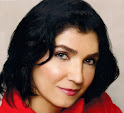Judy Chicago is one of the most famous feminist artists of the 20th and 21st centuries. She was born in Chicago, United States in 1939 and her real name is Judith Sylvia Cohen who became Judy Gerowitz after her first marriage.
In 1969 a placard at an art show announced that “Judy Gerowitz hereby divests herself of all names imposed upon her through male social dominance and chooses her own name, Judy Chicago1 “.
As a writer, she published numerous books like “Through the flower: My Struggle as a woman artist”, “Face to Face: Frida Kahlo”,” Women and art: contested territory”, "Kitty City: A Feline Book of Hours” etc.
I recently conducted an interview with Judy Chicago and I asked her the following questions:
ZM: You’ve are active in diverse fields. How do you introduce yourself? Who is Judy Chicago?
ZM: Is there any single person who inspires your work the most?
JC: Over the five decades of my career, there have been various inspiring people, my father first (who died when I was thirteen) who taught me that just because everyone believes something, it doesn't mean that they are right. This helped me stand up to criticism and isolation because he helped me learn to trust my own instincts. When I was a young woman trying to create a woman centered imagery, the writer Anais Nin inspired me to try and work through my confusion about whether there could be such a thing by writing, which has stood me in good stead throughout my life as I have published 12 books. Later, when I was researching my history as a woman and then trying to teach women's history through art in "the dinner party", the stories of those 1038 women represented in the piece inspired me and helped me greatly in my own life.
ZM: You are known as a feminist artist. How do you define feminist art?
JC: I define feminist art as art that acknowledges the role that gender plays in our lives. And men can make feminist art.
ZM: What is the reason your masterpiece” the dinner party “was so successful and became so famous?
JC: This is actually a question for art historians but I have my own answer; although feminist theorists are prone to insisting that gender is a shifting construct, for most women (and men for that matter) it is not. Women around the world continue to be impacted and their lives limited by their gender. (be that genital mutilation or 'cutting' which prevents women from sexual pleasure, forcing women out of their right to public space and public expression by shrouding them, sexually exploiting them through sex slavery, along with more subtle discrimination that under-pays, under -recognizes and under-rewards them for their work). "The dinner party" honors women and what they have done and that happens so rarely that audiences feel overwhelmed by what is a celebration of women in western civilization. Moreover, the dinner party reminds us of the potential power of art if it deals with issues that people care about in a way that they can understand (which a great deal of contemporary art does not do).
ZM: The dinner party is the history of women in western civilization. As a feminist artist are you interested in the history of women in Middle Eastern civilization?
JC: Absolutely.
ZM: You’ve got five decades experience in art. As a well know artist what would you recommend to parents who want their children to appreciate art from a young age?
JC: Take them to museums and have art on the wall, especially art by both women and men so that all children grow up knowing that women can be artists too.
ZM: How do you want people to remember Judy Chicago?
JC: As an artist who tried to make a contribution to the world, to increase opportunities for women and to insist on women's right to the highest forms of expression along with equal rights and representation in all aspects of life and work.
1- The Female Autograph, Edited by Domna C. Stanton, 31
This interview was translated into Persian(Farsi) and published in Shahrzadnews website.



